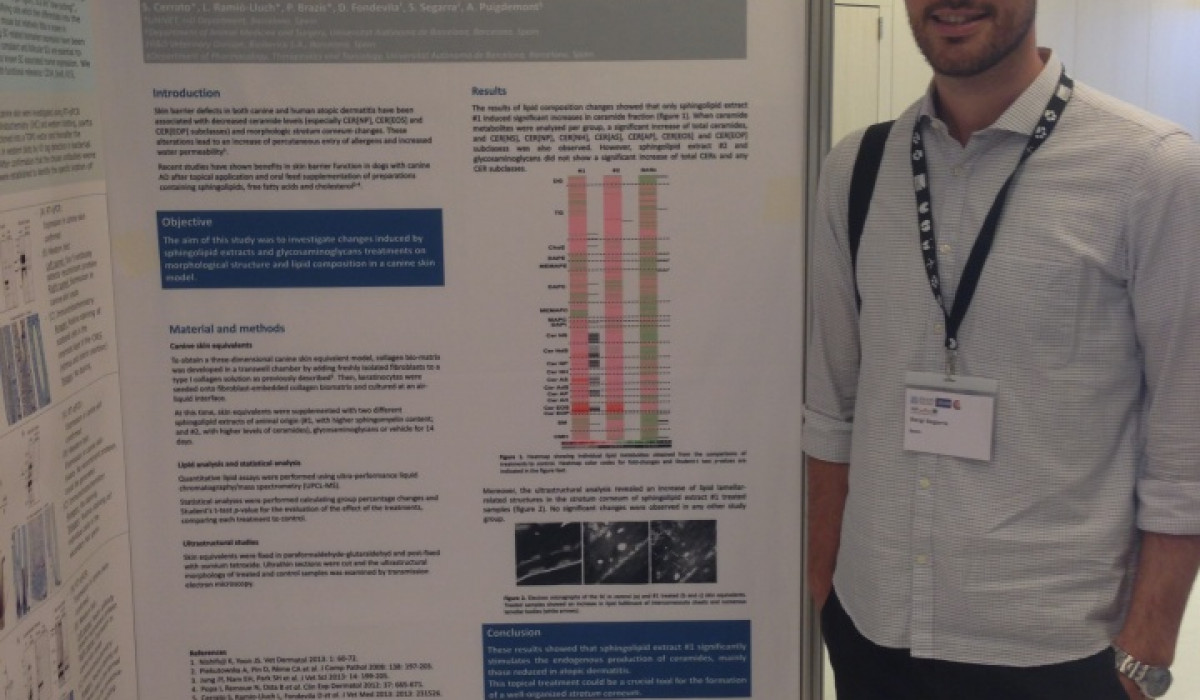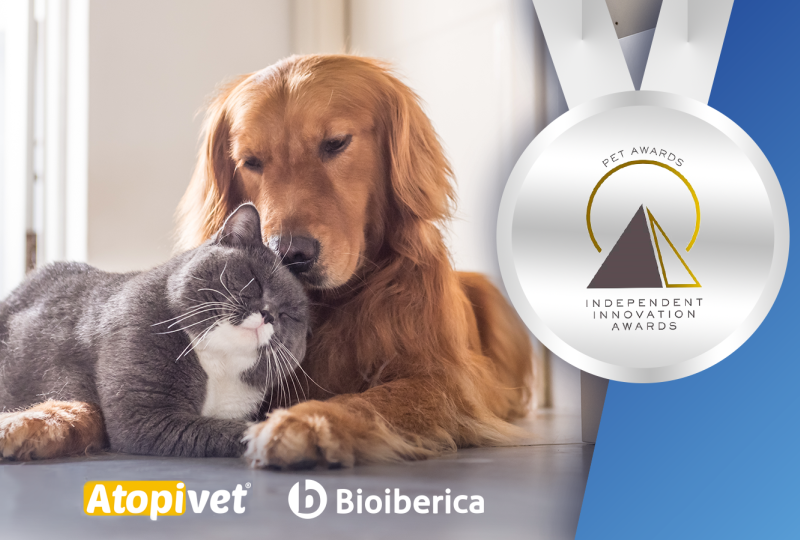A new study proves the efficacy of sphingolipids for the treatment of atopic dermatitis
- Bioiberica Veterinary presented the results of an in vitro study at the European Congress of Veterinary Dermatology
- This externally applied treatment could be a key tool for the repair of the cutaneous barrier, which is altered in atopic patients, both human and canine

At the ESVD-ECVD Congress in Krakow, Poland, Bioiberica Veterinary presented the results of their latest in vitro study on the effects of sphingolipid extract and Glycosaminoglycans on the morphologic structure and lipid contents in a canine skin equivalent model.
To carry out this study, made by experts from Bioiberica, Univet and the Autonomous University of Barcelona, equivalent tridimensional models of canine skin were obtained. Over a fourteen day period, these models were supplemented with two different types of sphingolipids of animal origin (one with a higher sphingomyelin content, while the other had a higher ceramide content) as well as with glycosaminoglycans.
The study’s authors observed a significant increase in ceramides in the skin models supplemented with sphingolipids having a higher content of sphingomyelin. Ceramids are molecules which are lost due to atopic dermatitis, thus compromising the role of the skin as a defensive barrier, which causes inflammation, itching, redness and dryness. More precisely, after application of the extract, 97 out of the 99 monitored ceramides showed increased levels. Moreover, these ceramides belonged to the subtypes particularly affected in atopic patients (CER[EOP], CER[EOS] and CER[NP]).
Furthermore, an electronic microscope structural analysis of these models revealed an increase in the number of lamellar bodies in the corneal strata, which in turn suggests a stimulation of the production of endogenous lipids thanks to the effects of the extract.
Therefore, the authors concluded that the use of sphingolipid extracts for topical treatment could be a key tool for the recovery of a well formed stratum corneum, as well as stimulating the production of the ceramides that are lost because of the dermatitis.
Related News
This year's winning product was DermalEase/Atopivet drops and mousse - a topical skin care solution.
Pet food is constantly evolving, with new and innovative products being introduced to promote a healthier and more conscious nutrition for pets.
- This marks yet another step forward in the internalisation strategy of this business unit's dedicated to companion animal health
- The company has launched three products for joint and internal health: Condrovet® Force HA, Calmurofel® and Impromune®


